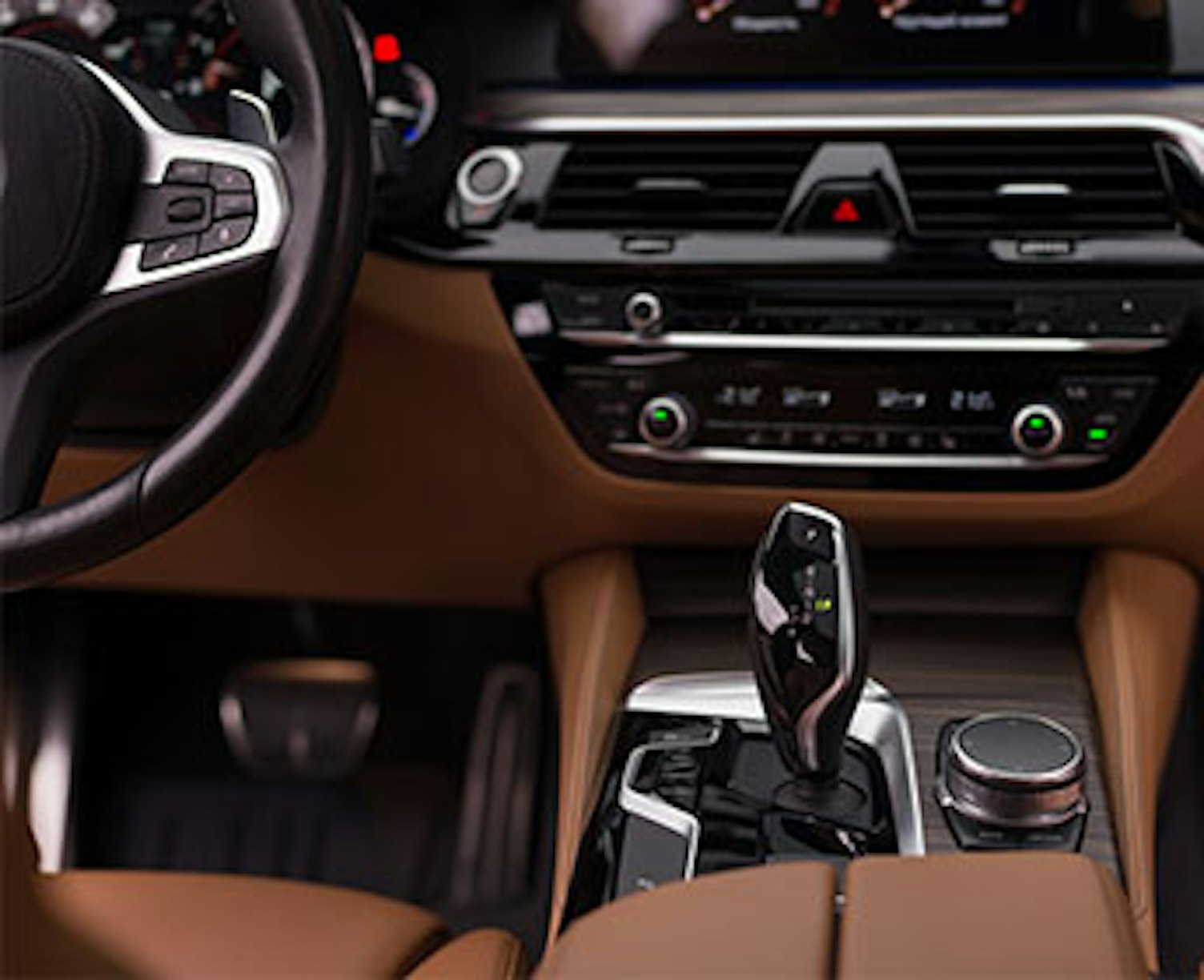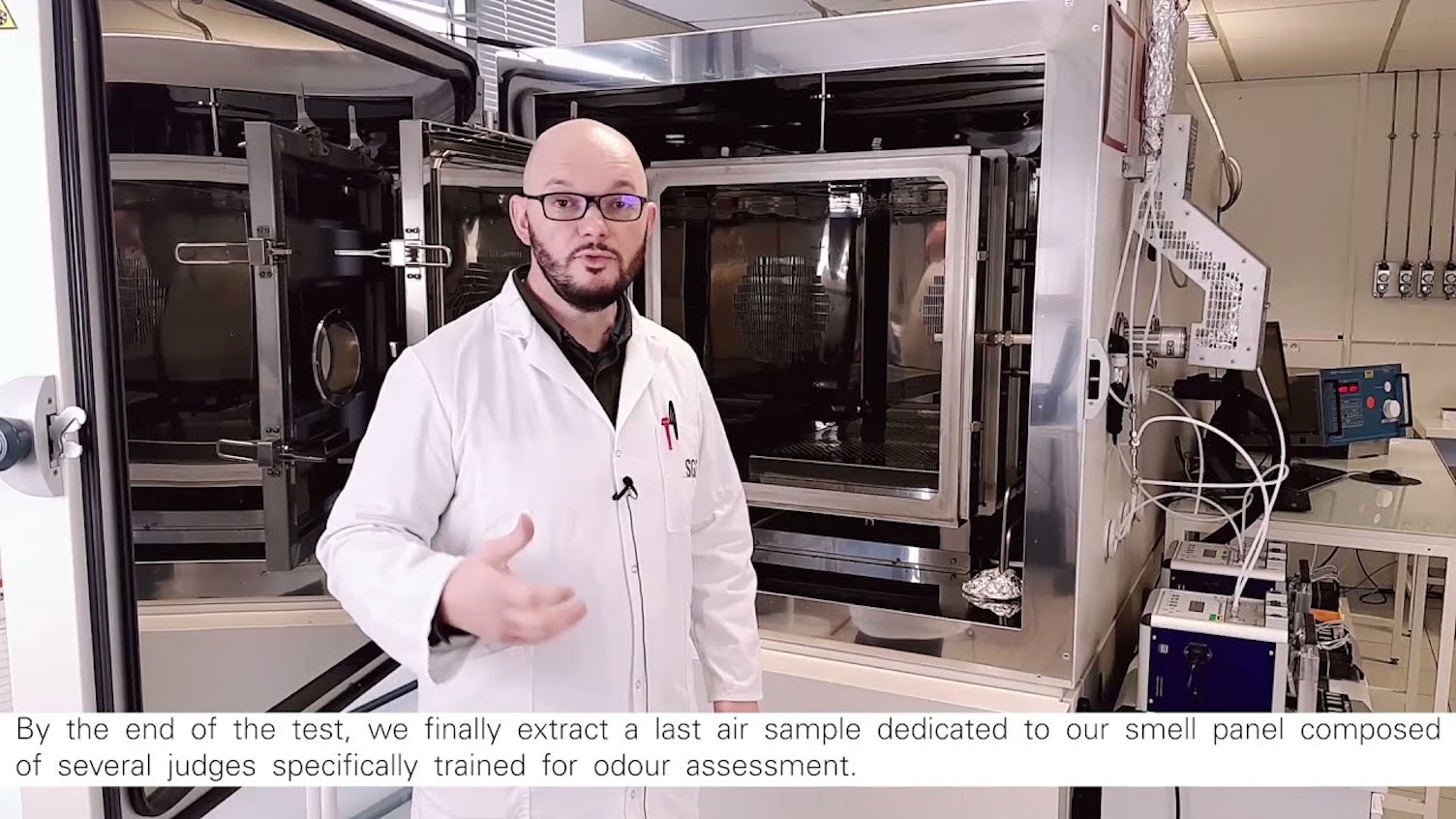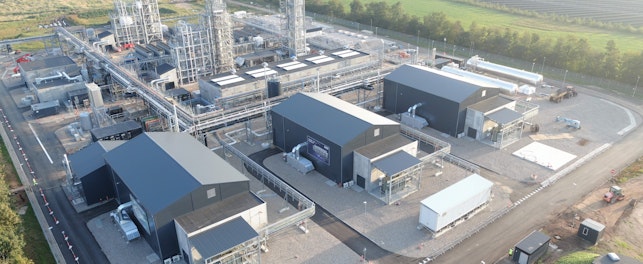
The materials present in confined spaces (vehicle interior, cabins, building interiors, etc.) are subject to very strict regulations in terms of interior "emissions".
Indeed, under the effect of environmental constraints (heat in particular), these materials are emitting different types of chemical compounds which can be dangerous for the health of users.
The acceptable rates and limits are given by European regulations or by OEMs, especially in transport industries.
Fabien SPITTLER, Sales Director of SGS laboratories of Cestas and Etupes (former Sercovam) : "In automotive sector more particularly, the regular change of design, permanent innovations (especially on recycled materials), weight reduction issues or personalization expected by end customers are multiplying the materials, and consequently the risks associated with their emissions. It is therefore a continuous flow of analyzes that we must carry out in our chemistry laboratories of Cestas and Etupes."
Concretely, the specifications require to check the conformity of parts and materials to following tests:
Volatile Organic Compounds (or VOCs):
Products to be quantified are, among others, total VOCs, benzene, toluene, ethylbenzene, xylenes and styrene. Dosage used to measure the amount of VOC emitted by the materials is performed by coupling thermodesorption (TDS) / gas chromatography (GC) / mass spectrometry (MS). The main standards for such measurements are Renault D42 3109, VDA 278, PSA D10 5495, NF ISO 16000-6, Renault D49 3027, Renault / Nissan RNES-B-00114 v1.1, VW PV3341, Kia / Hyundai MS300-55 , Toyota TSM0512G and TSM0508G, Nissan M0402, ISO12219-2, GMW15634, VDA 277, Ford BZ157-01, TPJLR.52.095, Volvo STD429-0003…
Formaldehydes and other carbonyl compounds:
We will perform a dosage for formaldehyde, aldehydes and ketones by dissolving these compounds in water after heating, then analyzing this solution by HPLC (high performance liquid chromatography). The most common standards are Renault D40 3004, PSA D40 5535, VW PV3925, Renault D49 3085, VDA 275, NF ISO 16000-3, Ford BZ 156-01, GMW 15635, Volvo STD429-0002 and VCS 1027,2739, BMW AA-0061…
Fogging or volatility:
Under the effect of heat, interior materials are emitting compounds that can condensate on cold supports. This is the effect of fogging (the greasy fog that can be seen on your windshield). There are 3 measurement techniques to quantify this deposit (or condensate) on the glazing: glossmetry, gravimetry and transmission (or Haze measurement). The different measurement methods are D451727, Renault / Nissan RNES-B-00070 v1.0, VW PV3015, DIN 75201, Toyota TSM0503G and TSH1564G, SAE J1756, Kia / Hyundai MS 300-54, Nissan M0161, GMW 3235, Volvo STD420 -0003 and VCS1027,2719, Honda HES D 6508, D4…
Odor analysis (smell):
After appreciating the design of the vehicle, the next sensation for a future buyer will be… the smell. This is measured through an expert panel who can:
- quantify the overall smell intensity of the material
- characterize the smell according to different olfactory referents
The methods carried out in our laboratories are Renault D49 3001, Renault / Nissan RNES-B-00096 v1.0, VW PV3900, PSA D10 5517, Renault D49 3046, Toyota TSM0505G, VDA 270, Renault D47 1217, ISO 13302, Ford BO 131 -03, TPJLR.52.458, Kia / Hyundai MS300-34, GMW3205, Volvo STD429-0001 and VCS1027,2729, LH10914580…
These 4 tests are performed on raw materials (polymers, paints, etc.) as well as on final parts.
For these ones, a specific double chamber is used to sample gazes that will then be analyzed. Michael DELAHAYE, air quality expert, explains the principle of these specific tests in the following video:




